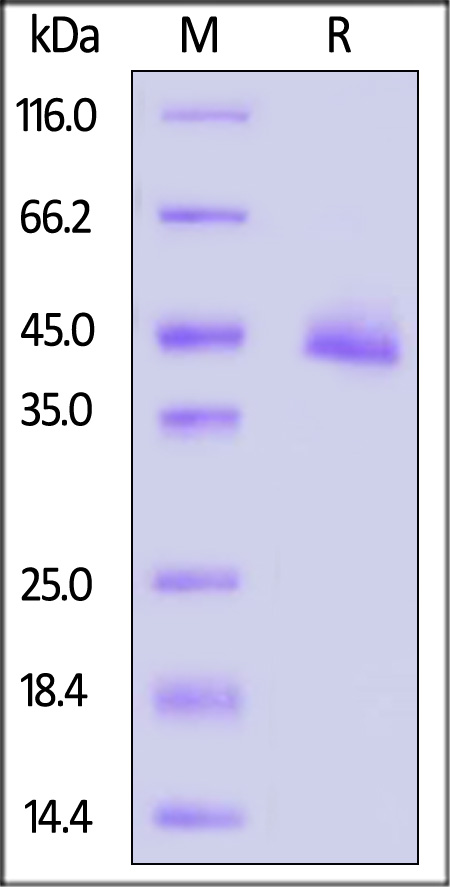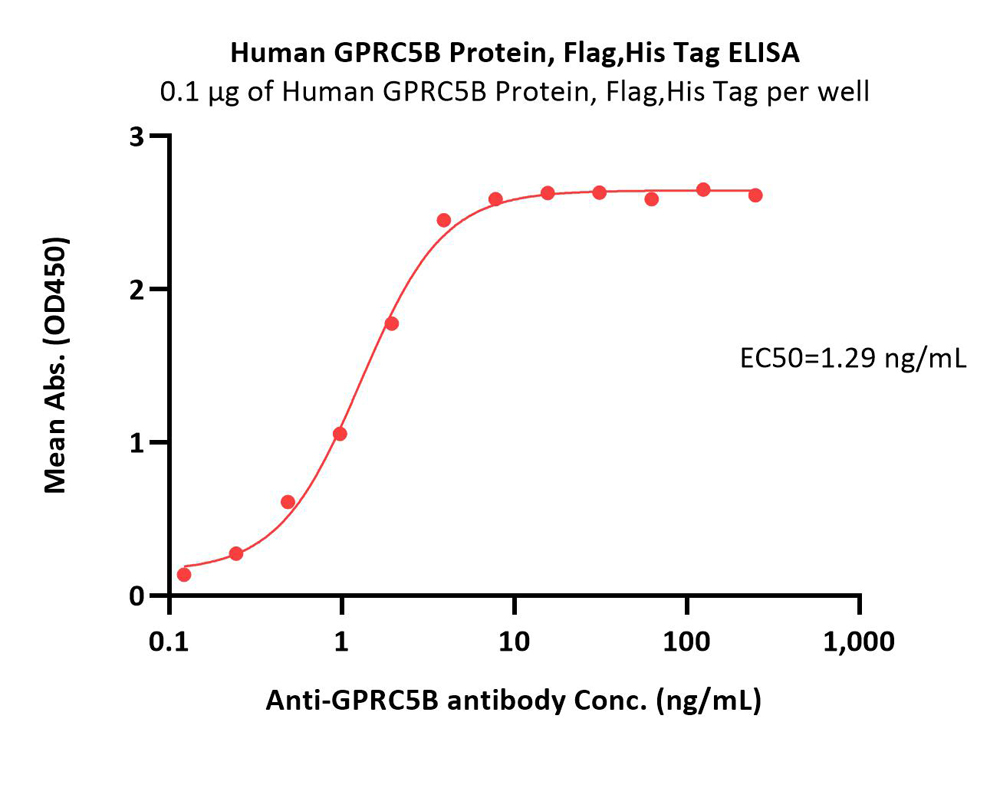分子别名(Synonym)
RAIG-2, RAIG2
表达区间及表达系统(Source)
Human GPRC5B Protein, Flag,His Tag (GPB-H52D7) is expressed from human 293 cells (HEK293). It contains AA Glu 29 - Trp 403 (Accession # Q9NZH0).
Predicted N-terminus: Asp
Request for sequence
蛋白结构(Molecular Characterization)

This protein carries flag tag at the N-terminus and polyhistidine tag at the C-terminus.
The protein has a calculated MW of 45.5 kDa. The protein migrates as 42-45 kDa when calibrated against Star Ribbon Pre-stained Protein Marker under reducing (R) condition (SDS-PAGE).
内毒素(Endotoxin)
Less than 1.0 EU per μg by the LAL method.
纯度(Purity)
>90% as determined by SDS-PAGE.
制剂(Formulation)
This product is not suitable for cell based experiments due to cytotoxicity of DDM.
DDM and CHS are INDISPENSABLE to keep membrane protein soluble and active, under no circumastance should you remove DDM and CHS.
DDM/CHS buffer (DC-11) is sold separately and not included in protein, and please contact us if you need the buffer.
If glycerol is not compatible to your application, remove glycerol just before immediate experiment, and NEVER store glycerol-free protein solution.
Supplied as 0.2 μm filtered solution in 50 mM HEPES, 150 mM NaCl, DDM, CHS, pH7.5 with glycerol as protectant.
Contact us for customized product form or formulation.
运输(Shipping)
This product is supplied and shipped with dry ice, please inquire the shipping cost.
存储(Storage)
Please avoid repeated freeze-thaw cycles.
This product is stable after storage at:
- The product MUST be stored at -70°C or lower upon receipt;
- -70°C for 3 months under sterile conditions.
电泳(SDS-PAGE)

Human GPRC5B Protein, Flag,His Tag on SDS-PAGE under reducing (R) condition. The gel was stained with Coomassie Blue. The purity of the protein is greater than 90% (With Star Ribbon Pre-stained Protein Marker).
活性(Bioactivity)-ELISA

Immobilized Human GPRC5B Protein, Flag,His Tag (Cat. No. GPB-H52D7) at 1 μg/mL (100 μL/well) can bind Anti-GPRC5B antibody with a linear range of 0.1-4 ng/mL (QC tested).
Protocol
背景(Background)
This gene encodes a member of the type 3 G protein-coupled receptor family. Members of this superfamily are characterized by a signature 7-transmembrane domain motif. The encoded protein may modulate insulin secretion and increased protein expression is associated with type 2 diabetes. Alternative splicing results in multiple transcript variants. [provided by RefSeq, Feb 2015]























































 膜杰作
膜杰作 Star Staining
Star Staining











